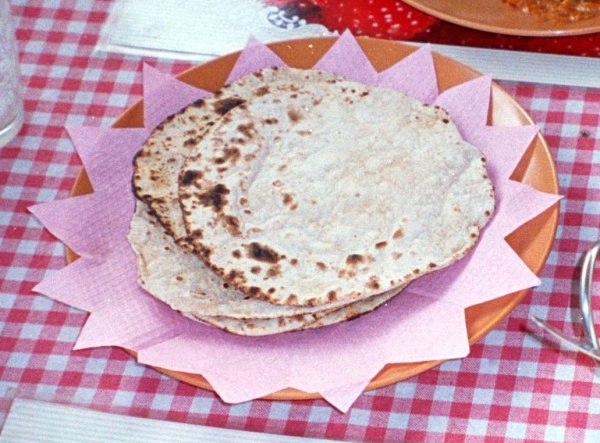Facts About Roti
Roti is a cherished round flatbread originating from the Indian subcontinent, made simply from wholemeal flour and water. Unlike naan, which is yeast-leavened, roti is unleavened. It is a staple food in many parts of the world, typically paired with cooked vegetables or curries.
There are numerous variations of roti across different cultures. In the Indian subcontinent, roti is usually made from wheat flour and cooked on a flat iron griddle called a tawa. Popular variations include tandoori roti and chapatis. In Sri Lanka, unique types such as pol roti and kottu roti are found. In the Caribbean, roti is highly favored in countries like Trinidad and Tobago, Guyana, and Jamaica, where it is often enjoyed with curries and stews. The roti wrap, a well-loved street food, consists of a folded roti filled with savory ingredients.
In Guyana, a softer version known as dot roti is common, alongside variants like dhalpuri and aloo roti. Suriname also has its own interpretation of roti, typically referring to dhalpuri or aloo puri, often served with curried chicken. In South Africa, roti is widely enjoyed by Indian communities, either as a flatbread or a wrap served with local curries. Similar flatbreads, such as khaboos and lavash, are popular in Iran.
Roti shops have emerged in various countries, including the United States, Canada, the United Kingdom, and the Netherlands. In Canada, roti has gained popularity due to the significant South Asian and Caribbean immigrant populations. The wrapped version of roti has made its way to North American cities like Toronto, where distinctive variations such as the East Indian roti can be found.

 Suriname
Suriname